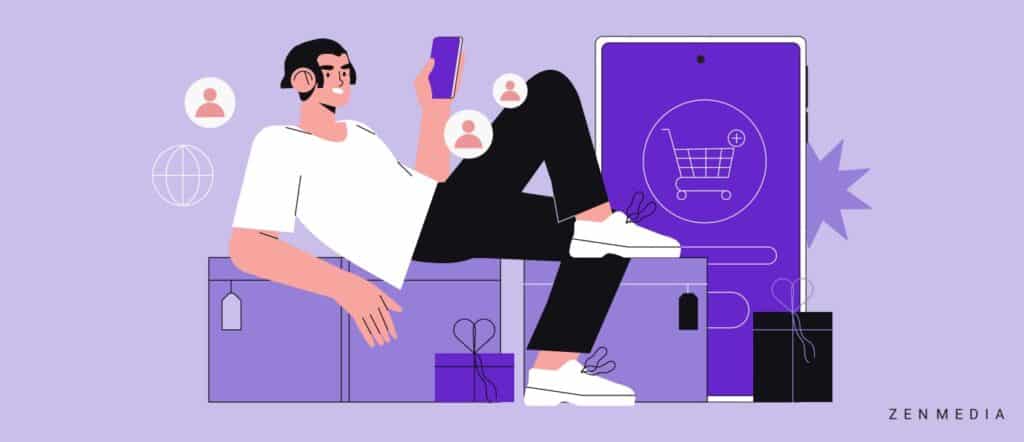Today’s discerning consumers seek authenticity and credibility in the brands they choose to engage with. While it may be easy to dismiss B2B influencer marketing as a trend reserved for consumer-focused brands, B2B companies should pay close attention to its immense potential.
Influencers have established loyal and engaged audiences within specific industries or professional communities. Partnering with the right B2B influencer allows businesses to tap into these pre-existing networks, instantly expanding their reach and increasing brand awareness among a relevant and receptive audience. By leveraging the influencer’s credibility and expertise, B2Bs can position themselves as trusted authorities in their respective fields.
The right influencer collaboration can act as a catalyst for unprecedented brand awareness, enhanced reputation, and ultimately, tangible business growth.
But how can B2Bs find the right influencer for their brand?
We’re glad you asked:
Step 1: Set goals and develop a strategy.
Clearly articulate what you aim to achieve through influencer collaboration. Whether it’s increasing brand awareness, generating leads, driving conversions, or establishing thought leadership, having well-defined goals will guide your influencer selection and campaign execution.
Plus you’ll gain a deeper understanding of your target audience—their demographics, preferences, pain points, and online behavior. This knowledge will help you find influencers who have a relevant and engaged following within your niche.
Related Reading: The Rise of B2B Influencer Marketing
Step 2: Identify potential influencers in your industry.
A robust influencer marketing strategy hinges on partnering with influencers who possess credibility and a solid reputation. Dive deep into their online presence. Examine their content quality, consistency, and the level of engagement they generate. Seek out testimonials and recommendations from industry peers. It’s crucial to verify their expertise and ensure they are a trusted voice within your field.
Networking events, conferences, and online communities present excellent opportunities to connect with industry influencers. Attend relevant events, actively participate in discussions, and build relationships with influencers and their peers. By immersing yourself in your industry’s ecosystem, you’ll gain invaluable insights and increase your chances of identifying the ideal B2B influencer for your brand.
Working with a marketing or PR agency can also help your business seek out quality content creators. Try to suspend the belief that your influencer needs to have immense power and fame; their knowledge and skills in the industry are what matter most.
Step 3: Evaluate the influencer’s reach and engagement.
While sheer follower count is not the sole determinant of an influencer’s impact, it is an important starting point. Look for influencers with a substantial following within your industry. However, don’t get blinded by numbers alone; remember to focus on the quality of followers rather than the quantity.
Niche influences, like nano-influencers (those who have less than 10K followers) or micro-influencers (those who have less than 100K followers), can have a serious impact on a B2B’s bottom line. What’s more important than follower count is engagement.
A large following is meaningless if the audience isn’t actively engaging with the content. Assess metrics such as likes, comments, shares, and click-through rates to gauge the level of audience interaction. Are the influencer’s followers actively participating in conversations? Are they sharing their opinions and seeking advice? Robust engagement signifies an invested and receptive audience.
Step 4: Assess the alignment between the influencer and your brand values and goals.
Before assessing influencer alignment, you must have a firm grasp of your own brand’s values and goals. What does your brand stand for? What are your core principles? Clearly define your brand’s identity, purpose, and objectives.
Dive into the influencer’s content to gauge its alignment with your brand values. Is their messaging consistent with what your brand represents? Assess the tone, language, and overall style of their content. Does it resonate with your target audience? Ensure that their content complements your brand and enhances its reputation rather than conflicting with it.
B2B influencer collaborations thrive on authenticity and expertise. Consider the influencer’s niche and industry alignment. Are they recognized as a credible voice within your industry? Do they consistently produce content that showcases their deep knowledge and understanding of the field? Choose influencers whose expertise seamlessly complements your brand’s domain.
Ethical alignment is also crucial in maintaining the integrity of your brand. Investigate the influencer’s conduct and previous collaborations. Have they been involved in any controversies or exhibited questionable behavior? Ensure that their ethical standards align with your own. Partnering with an influencer who upholds the same ethical principles as your brand will safeguard your reputation and minimize risks.
Related Reading: The Expert Guide to Influencer Marketing in the B2B Space
Step 5: Measure campaign performance and influencer marketing ROI.
Before launching an influencer campaign, establish clear KPIs aligned with your objectives. Are you looking to increase website traffic, generate leads, boost social media engagement, or drive conversions? By defining specific, measurable, attainable, relevant, and time-bound (SMART) KPIs, you create a benchmark against which you can evaluate performance.
Once your influencer marketing campaign is underway, it’s crucial to continuously monitor and evaluate the influencer’s performance. To ensure your efforts yield tangible results and inform future strategies, a data-driven approach is essential.
Set up tracking mechanisms and use analytics tools to measure key metrics such as reach, engagement, website traffic, and conversions, and to gain insights into audience behavior, engagement levels, and campaign performance. Use tracking links, unique promo codes, or custom landing pages to attribute traffic, leads, or conversations directly to the influencer’s efforts.
Related Reading: B2B Influencer Marketing Trends
Engagement metrics provide a window into the effectiveness of your influencer campaigns. Assess metrics such as likes, comments, shares, click-through rates, and time spent on the page. By analyzing these indicators, you can gauge the level of audience interaction and the impact of the influencer’s content on your target audience.
Beyond engagement, assess the effectiveness of influencer marketing in driving lead generation and conversions. Track the number of leads generated through influencer campaigns and measure the conversion rates of those leads into paying customers. This analysis provides a tangible measure of the campaign’s impact on your bottom line.
Influencer collaborations can (and often do) extend beyond a single campaign. Consider the potential for long-term partnerships with influencers who align with your brand values and goals. Assess their willingness to engage in ongoing relationships and their ability to evolve with your brand. Long-term partnerships foster deeper connections and enable consistent brand messaging.
Ready to find the perfect B2B influencer for your brand? Reach out.





